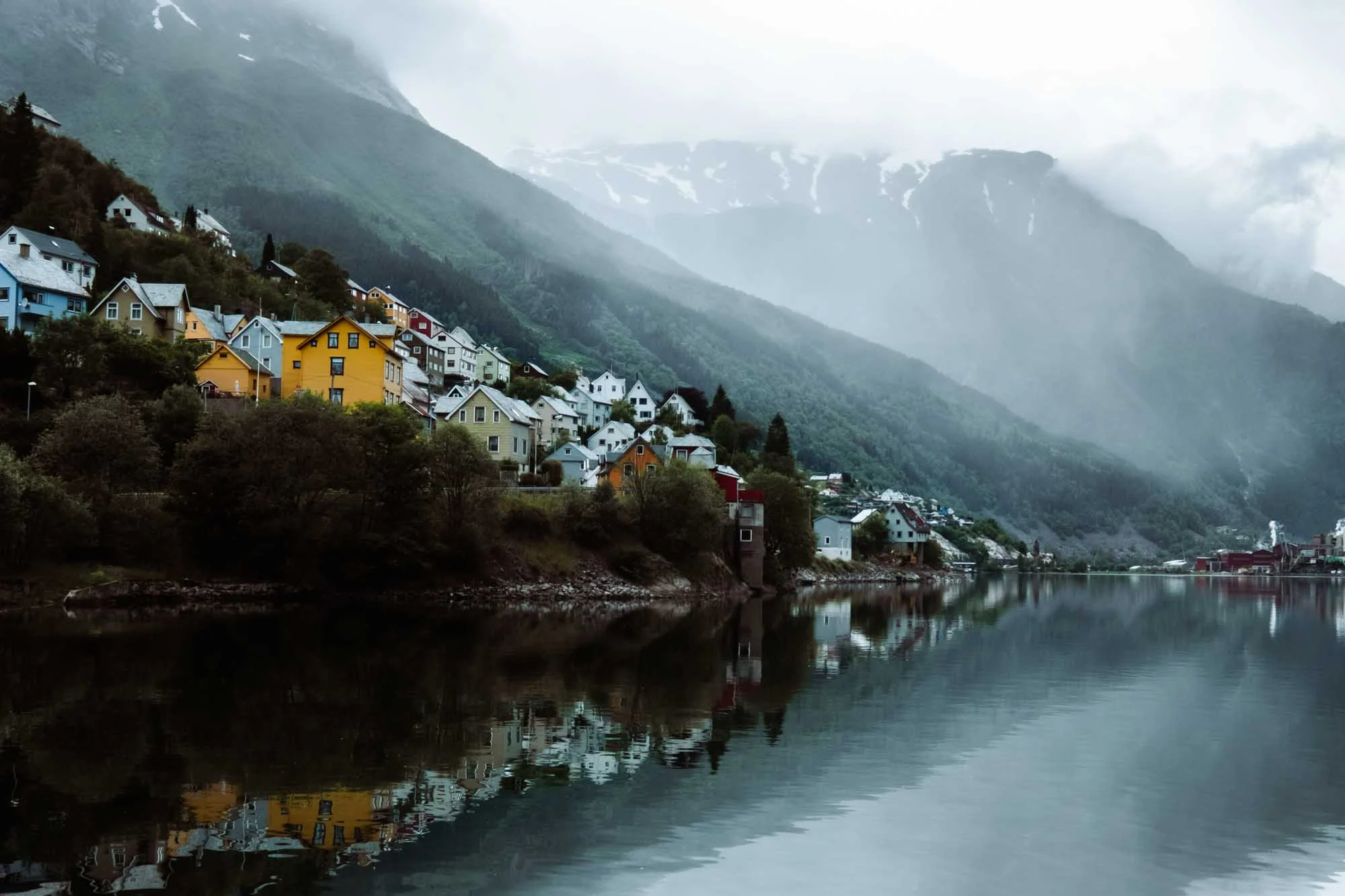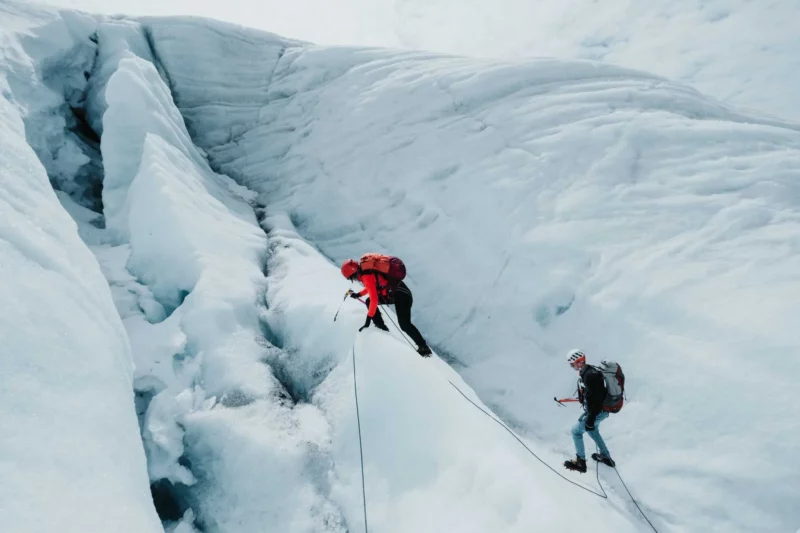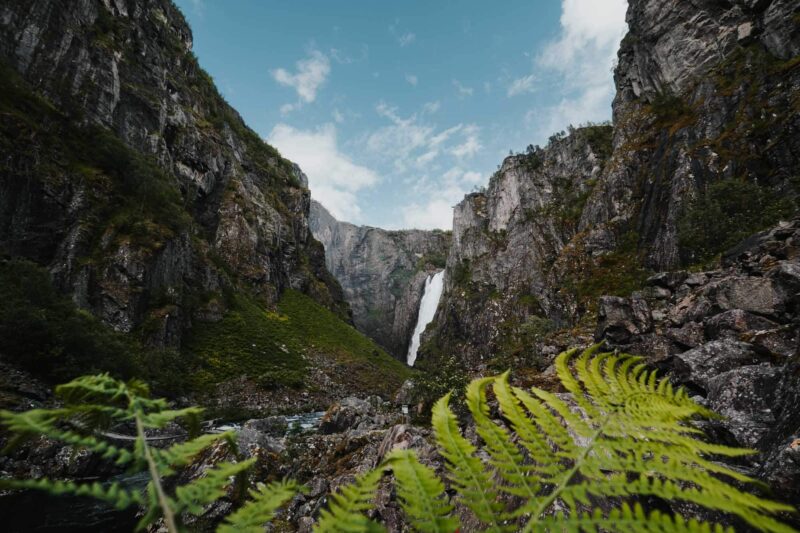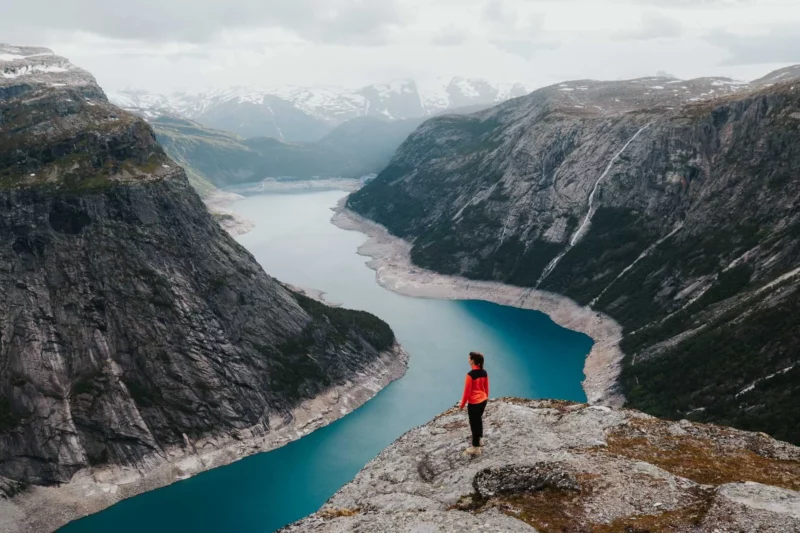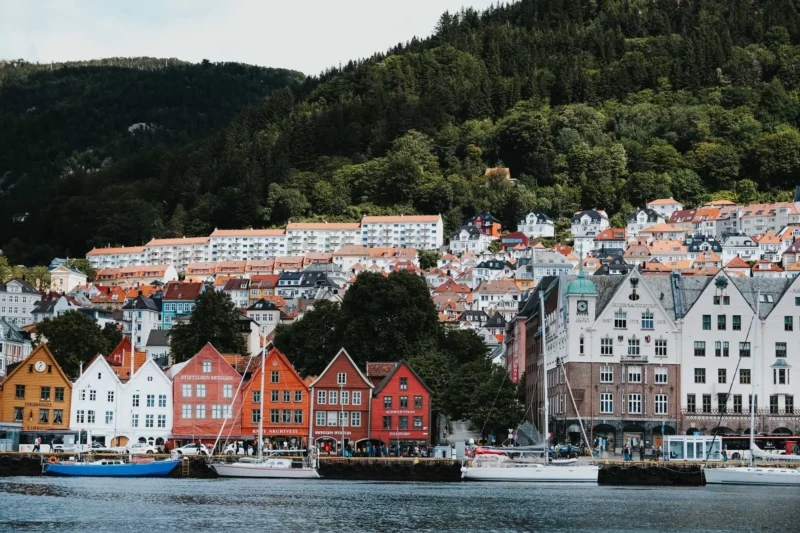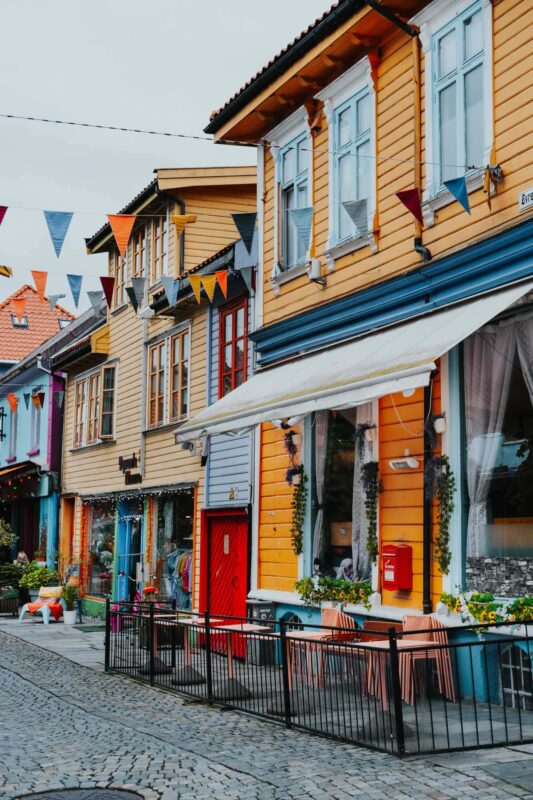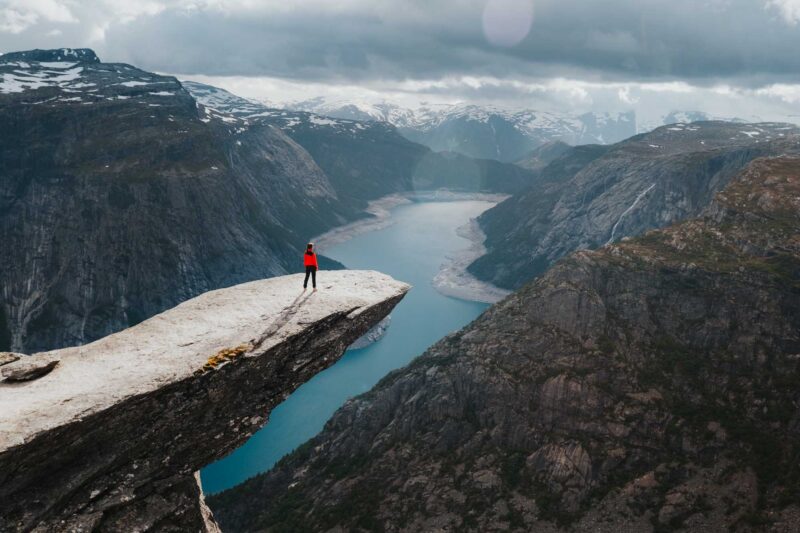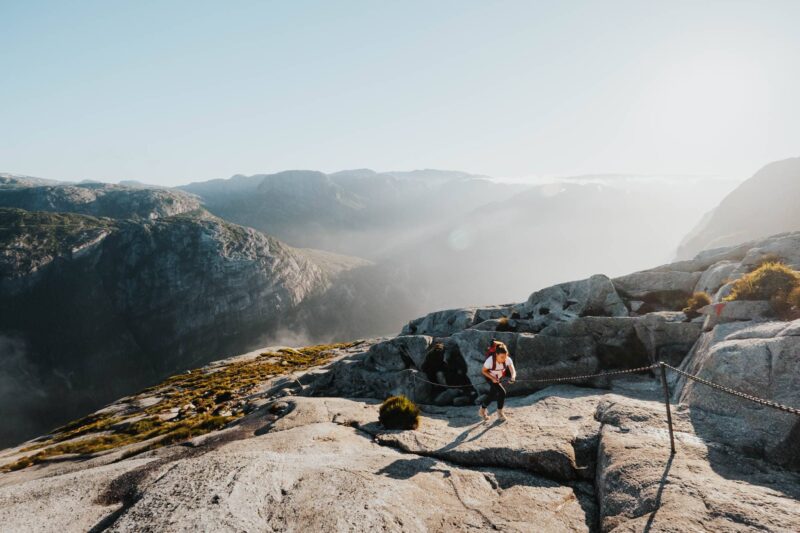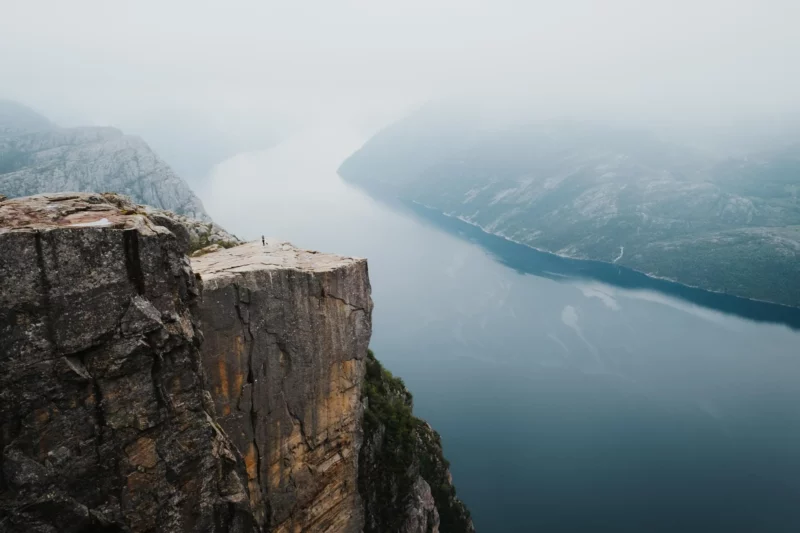A trip to Norway will certainly not disappoint you, as this country has everything needed for an unforgettable journey. Before you step into Norway’s rugged landscapes, it’s helpful to make the necessary preparations. That’s why we’ve put together 9 practical tips to help you get the most out of your vacation and avoid unpleasant surprises. This way, once you’re in Norway, you can fully enjoy this spectacular country!
Tip: If you’re not looking for practical tips but rather inspiration for the most beautiful places in Norway, check out our Norway travel route!
#1 Norway’s right to roam
The right to roam means everyone has the right to move freely in nature, regardless of who owns the land. This right has been enshrined in Norwegian law since 1957, ensuring that everyone can enjoy nature. This law permits wild camping in Norway. You can camp on uncultivated land, which usually includes forests, mountains, and coasts. Avoid camping on cultivated land, such as farmland. Camp at least 150 meters (500 ft) away from inhabited houses and cabins, unless you have permission from the owner. National parks have specific rules about wild camping. Whether camping is allowed is always indicated on signs on-site. You can also find the rules on the official websites of national parks.
Tip: “Leave no trace” is the most important rule of the right to roam in Norway. This means leaving nature clean and untouched. Take your trash with you, do not damage plants and trees, and do not disturb wildlife or other people. When wild camping, use nature as your toilet. Do not leave toilet paper in nature. It takes at least a month for toilet paper to decompose, and if everyone leaves it behind, it causes significant pollution. Therefore, also put used toilet paper in a bag and dispose of it in a trash can later.
#2 What is the Best Time to Visit Norway?
The best time to visit Norway depends on what you want to do and which region you plan to visit. Norway is a vast country with significant differences between the north, south, inland, and the coast. If you follow our South Norway travel route, the best months are June, July, August, and September. Below, you’ll find information about the weather in Norway by season.
November to March in Norway
Visit Norway between November and March if you want to engage in winter activities like skiing, ice fishing, and reindeer sledding. You also have a good chance of seeing the Northern Lights during this period. Keep in mind that daylight hours are limited, and some roads may be closed due to snow. Many hiking trails are inaccessible in winter or only accessible with a guide.
April & May in Norway
In spring, temperatures become milder, snow melts, and the first blooms appear. Nature awakens from its winter slumber and slowly comes back to life. It’s a beautiful time to visit Norway, but you might still encounter snow. Be aware that many hiking trails might still be inaccessible. This period is particularly suitable for visiting cities and towns in Norway.
June to August in Norway
September & October in Norway
#3 Pack clothing for unpredictable weather
There’s a popular saying in Norway: There’s no such thing as bad weather, only bad clothing. Leave your blouses and dresses at home and pack practical clothing for your trip to Norway, especially if you plan to spend a lot of time outdoors. Good outdoor gear is essential. No matter the season, it’s important to bring clothing for all types of weather. Norwegian weather can be very unpredictable, and especially in the mountains, conditions can change quickly. Never go hiking without a rain jacket. Even on a clear, sunny day, the weather can turn suddenly with heavy rain and strong winds, making it very cold. Always dress in layers or pack them in your backpack when hiking.
Tip: yr.no is the most accurate website for weather forecasts in Norway.
#4 A (rental) car is essential in Norway
The best way to get around Norway is by car or camper. Norway is sparsely populated and vast, with attractions often located far from each other. With your own transportation, you can easily drive to the start of a hike, your accommodation, and the supermarket. Alternatively, you can travel by bus, but this often doesn’t get you to specific places like the starting point of a hike. Therefore, having your own transportation is crucial for a road trip, especially if you follow our itinerary through Norway.
You can choose to drive your own car or camper to Norway or rent a car to skip the long drive. Check out our tips for renting a car in Norway.

#5 Register Your Own Car or Camper for Toll Roads
Traveling with your own car or camper in Norway? You need to register your vehicle in advance for toll roads. This does not apply if you rent a car in Norway. The toll roads in Norway are fully automated; you don’t need to stop anywhere to pay. Payment is handled automatically and later. Different rates apply depending on the type of vehicle, such as whether it is electric or gasoline-powered. Since the system may not always accurately determine these details, you need to register your vehicle in advance to ensure you pay the correct rate. Registration is simple and takes just a few minutes. You can do this via EPASS24.
#6 How to Use Ferries in Norway
Norway is rich in lakes and fjords, so you may need to take a ferry during your trip. You drive your car or camper onto the ferry and sail across. This is straightforward and saves you a lot of detours. It’s not required to book in advance, though it’s advisable to do so for some ferries during peak season to avoid long waits. Especially busy routes like Geiranger-Hellesylt, Lauvvik-Lysebotn, and Bognes-Lødingen – Bodø-Moskenes can get crowded. Payment for the ferry, like tolls, is handled automatically. You can easily check ferry departure times on Google Maps.
#7 Tips for Saving Money in Norway
It’s no surprise that Norway isn’t a budget travel destination. Prices in supermarkets and restaurants are higher than what you might be used to at home. However, that doesn’t mean you’ll break the bank by the time you get back from your vacation. There are plenty of ways to save money, and we’ve compiled our tips below.
- The nature in Norway is completely free, so make sure to hike as much as possible. You never have to pay an entrance fee to access natural areas, though parking your car often comes with a cost.
- Travel outside of the peak season. Prices in July and August are significantly higher compared to June and September.
- Go camping (wild camping or at established sites). Pitch your tent in nature or at one of Norway’s many campgrounds to save on accommodation costs.
- If camping isn’t your thing and you prefer staying in accommodations, make sure to book early, especially if you’re traveling during the peak season. Affordable accommodations fill up quickly, and you might end up having to stay in expensive hotels. Check out our favorite places to stay in Norway.
- Dining out in Norway is expensive, so it’s handy to prepare your own meals. Book accommodation with a kitchen or bring your own cooking equipment if you’re camping. Many campgrounds also have shared kitchens. Driving from a nearby, cheaper country, such as Germany? Bring plenty of non-perishable groceries to avoid buying them in Norway.
- Shop at supermarkets like Rema 1000, Kiwi, or Rimi. These are the most affordable supermarkets in the country.
- Avoid buying alcohol and cigarettes as they are very expensive.

#8 Financial matters in Norway
In Norway, you’ll be paying with the Norwegian Krone. While it’s generally a good idea to carry some cash in most countries, it’s not necessarily required in Norway. You can pay almost everywhere with your bank card or credit card.
#9 Shopping on Sundays
Keep in mind that most stores are closed on Sundays in Norway. Even supermarkets are often closed on this day, so stock up on extra groceries on Saturday. Restaurants are usually open on Sundays.
